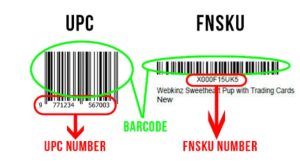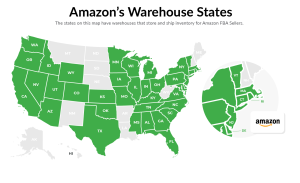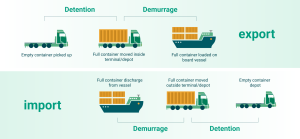Amazon is a giant online marketplace that allows all people to sell products under their own brand. More than 50,000 products are sold on Amazon daily. Each of these products is assigned its own unique Amazon barcode to identify it. These numeric characters encode information about product numbers, batches and are of great importance in the organization of the supply chain. However, everything is not so simple here and different labels are used for delivery via Amazon, such as GTIN, UPC barcode, ASIN, FSKU and so on. In this article, we will look at each of them in detail and determine for which cases it is used.
GTIN Barcodes
The unique GTIN is an international labeling and accounting code for logistic units that many products have. It is indicated next to the barcode on the product packaging or book cover.
GTINs vary in length depending on the type of product and the country in which it is sold. Here are the types of GTINs you may encounter:
- UPC barcode or GTIN-12 (in North America) – 12 digit number. Eight digit UPC-E identifiers must be converted to 12 digit UPC-A.
- EAN or GTIN-13 (in Europe) – 13-digit number.
- JAN or GTIN-13 (in Japan) – 8 or 13 digit number.
- ISBN (for books) – 13-digit number. If you only have an ISBN-10 identifier, it must be converted to ISBN-13 format.
- ITF-14 or GTIN-14 (for multipacks) – 14-digit number.
UPC Barcodes
UPC is the GTIN number most commonly found in North America. UPC is just one of the available ways for Amazon to track products in its database. EAN is its European equivalent. Universal Product Codes (UPCs) are unique sets of numbers used to identify products. They are displayed in “barcode symbols” which are machine readable. Consumers use them for things like proof of purchase in the mail and comparing price on the shelf with the item in hand. Stores use them for inventory and pricing. Today, UPC symbols are everywhere and are used in almost every retail store in the United States and Canada.
The first six digits of the UPC barcode are the manufacturer. The next five digits are the item number of the product, and the last digit is the check digit. It is generated by adding and multiplying the digits in the code to confirm that the UPC is valid, otherwise it will not scan correctly. The last digit of any barcode is called the “check digit” and is used to detect errors when scanning the UPC or manually entering it. There is a mathematical formula that is used with the first eleven digits, which, when applied, must equal the last number. Otherwise, an error occurred in the scanned reading or entering the UPC number.
When you list your product on Amazon, you will need a UPC or other GTIN barcode to create your product listing page. If you don’t need FNSKU (more on that in a moment), UPC can be used in Amazon fulfillment centers to track and identify your products.
You only need one barcode per product.
FNSKU Barcodes
FNSKU (FBA SKU) is an identifier consisting of 10 numbers and letters that you will need if you are going to use fulfillment, i.e. delivery of goods to Amazon warehouses (FBA service). You don’t need to buy it separately. It is generated automatically based on the already purchased UPC code when filling in the listing fields. Like UPCs, they are important for anything you ship to an Amazon warehouse if other sellers may have the same items. It’s no secret that many sellers on Amazon source products from the same manufacturer. This means that if they all use the same manufacturer’s UPC or EAN, there is a risk that they will end up mixed up when they get to Amazon’s fulfillment center. The platform “understands” this, and therefore, after setting up your product for Fulfillment By Amazon (FBA) and launching it on Amazon.com, Amazon assigns a unique FNSKU to the products. You can then export the Amazon-generated barcodes and add them to your packaging before sending them to the Amazon warehouse, or you can provide the FNSKU to the manufacturer to include in your product by printing them directly on the packaging or attaching a label to them. It is the most comfortable and safe.
ISBN Barcodes
You will need an ISBN barcode if you are planning to build a business selling books on Amazon. This standard book number contains information about the book – title, author, editor and publisher. An ISBN is 10 digits long, or 13 digits if published after January 1, 2007. You can get your ISBN from ISBN.org.
ASIN
The ASIN code is a unique product identifier that the Amazon system assigns to it when the product is added to the site. It is displayed in the product card and you can search for it on the site. It is generated when a product is uploaded to Amazon. This is a 10 letter and/or number- barcode that is used as a product ID in the Amazon catalog. Amazon uses it to track inventory and index its product pages to provide better searches on Amazon.com, while also providing important product data to shoppers. In other words, Amazon keeps track of goods in the warehouse using the FNSKU code, and on the website using the ASIN barcode. It does not need to be purchased separately, it is also generated automatically. During the creation of a new product, you simply enter the UPC in the required field, and in return, Amazon issues two codes:
- FNSKU – if you are shipping FBA.
- ASIN – when you create a listing.
This code is important for users of applications that work with Amazon. Using it, you can quickly see sales statistics, as well as find it in the system.





